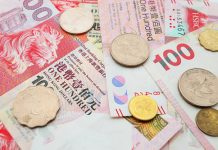The biggest market mover this week was Fed Governor Jerome Powell’s hawkish testimony in the Senate. Powell pointed to an “extremely tight labour market” and stated that the Fed was prepared to speed up rate rises if warranted by data, thus opening the door for a possible 50bp hike at the upcoming meeting on 22 March. No doubt next week’s CPI report for February and the non-farm payrolls released today (after deadline) are key for the Fed’s decision on the size of the hike. US job openings released this week were again stronger than expected, although declining slightly from the January level. When Powell described the labour market he referred specifically to the ratio of job openings to unemployed, which stood at 1.9 in January, a very high number historically. The market prices more than 100bp of further rate increases by the Fed over the next 2-3 quarters.
ECB members increasingly disagree on what to signal to the market, which led to an open spat when Bank of Italy governor Ignazio Visco took a swipe at colleagues saying that “Uncertainty is so high that the Governing Council of the ECB has agreed to decide ‘meeting by meeting’, without ‘forward guidance…I therefore don’t appreciate statements by my colleagues about future and prolonged interest rate hikes.” It followed comments by Austrian central bank Governor Holzmann that he expected the ECB to hike 50bp at the next four meetings. Holzmann is probably the most hawkish member of the ECB. The market currently prices a further 160bp of hikes broadly in line with our own forecast.
Updated fiscal policy guidance from the European Commission urged EU countries to start phasing out government support programmes after the pandemic and energy crisis, as Brussels prepares to reinstate Stability and Growth Pact rules in 2024. However, the planned reinstatement coincides with ongoing discussions to overhaul the Stability and Growth Pact (SGP) rules, where consensus remains yet elusive.
In China the National People’s Congress opened on Sunday and revealed a growth target for 2023 of ‘around 5%’, which was at the low end of expectations. It is a signal that China will hold back from major stimulus and prioritizes long-term stability goals. We expect China to beat the target and growth 5.5% this year as data so far points to a strong rebound of the economy after the ‘reopening’ and we see scope for pent-up demand in consumption and housing to be unleashed this year. This weekend China will present new people on key positions in the government and Li Qiang will officially become China’s new number two as Premier, taking over from Li Keqiang.
In financial markets long bond yields have moved sideways despite higher short-end yields following the hawkish signals from Powell. The USD gained on more rate hikes being priced while equities and commodity prices are broadly flat on the week.
The key data release the coming week will be the US CPI for February. We broadly agree with consensus of another print on the high side of 0.4% m/m for core CPI. It is also time for the ECB meeting on Thursday which will be the highlight. A 50bp hike is a done deal, but markets will pay attention to the communication for the May meeting, given the continued strong underlying inflation pressure. See also our ECB preview: Higher for longer – now seen at 4%, 2 March.














